This is the 4th of 6 installments covering our European river cruise:
- For Grand European River Cruise Part 1 click here
- For Grand European River Cruise Part 2 click here
- For Grand European River Cruise Part 3 click here

Looking back at our itinerary I realized we stopped at 8 cities in Germany along the Danube, Main and Rhine rivers. I’ll have to break these 8 port calls into two posts, for there is so much to share. Our stops in Germany were at Passau, Regensburg, Nuremberg, Bamberg, Würzburg, Wertheim, Koblenz and Cologne, and of course each has its own unique history and distinctive character.
The first five cities we visited are all part of the state of Bavaria in southeast Germany. We learned that Bavaria traces its history back to the 6th century, and evidence of its time ruled by dukes and kings can be found in the grand palaces and residences peppering the region. The castles in these quaint towns remain partially surrounded by protective walls and bastions constructed in medieval times. So much so that our program director joked that the alternate name of our cruise was “The ABC Cruise” – Another Bloody Castle 🙂
Passau, Germany
Heading north on the Danube River, Passau is the first major German city past the Austrian-German border. It lies at the confluence of three major European rivers – the Inn, Danube and IIz – hence dubbed the “City of Three Rivers.” Because of that, flooding is inevitable and the 2013 flood brought the waters to their highest level in 500 years.
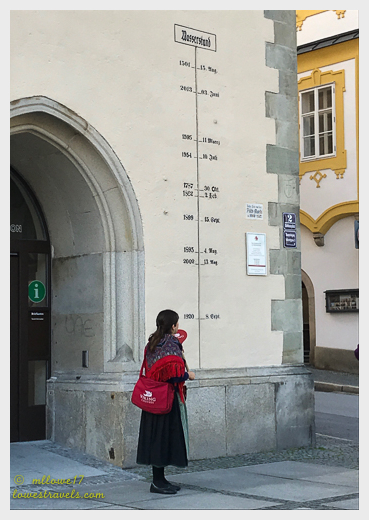
Founded by the Celts more than 2,000 years ago, Passau is one of Bavaria’s oldest cities. Because of its strategic location it grew to great economic and political power. After a fire in the 17th century, the city was rebuilt to reflect the baroque style that remains today. During our walking tour, the legacy of its past was detailed in the form of graceful arcades, colorful houses with rococo facades, and the jumble of cobbled lanes, underpasses and archways leading off the main thoroughfare.

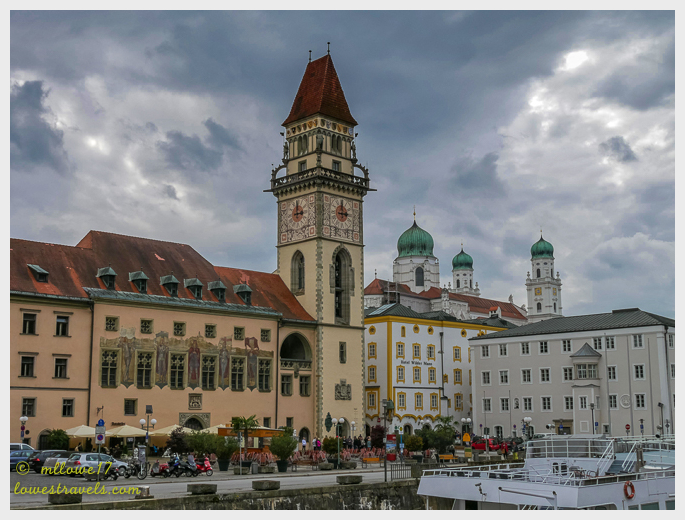
Our walk ended at the glorious 17th century baroque style St. Stephen’s Cathedral. It is home to the largest catholic church organ in the world, and Europe´s biggest organ. We were fortunate to hear the organ played at a concert during our visit. The cathedral was an acoustic delight that was the highlight of this stop.
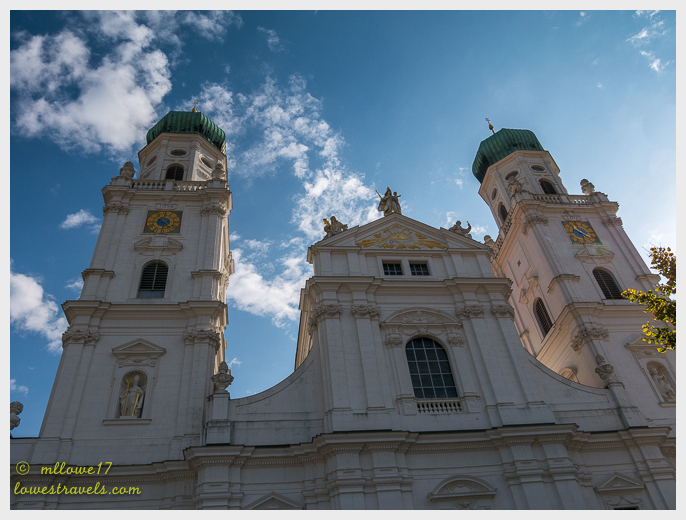
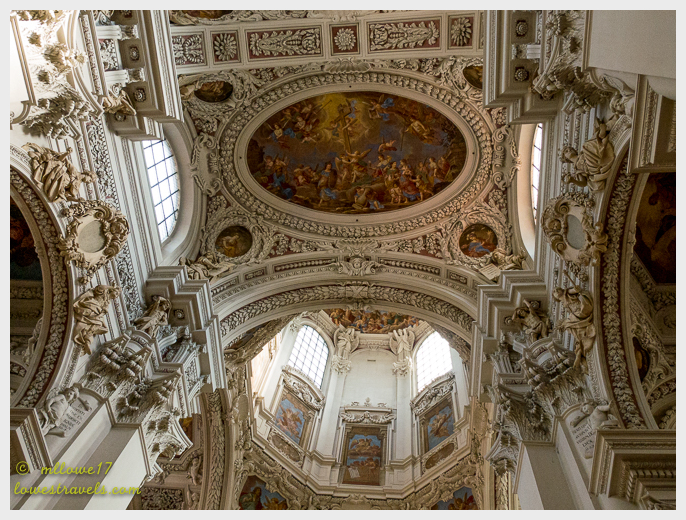


I thought it interesting that the little German town of Passau has the largest cathedral organ in the world!
Regensburg, Germany
This walking tour took us around the oldest and one of the best preserved medieval cities in Europe. Its city center escaped WWII bomb damage, and its well preserved condition earns its status as a UNESCO World Heritage Site. Here the local guide pointed out to us some of the remaining Roman city walls erected by Marcus Aurelius in the year 179AD, the many old patrician houses, the Gothic St. Peter’s Cathedral and the 12th century Old Stone Bridge.


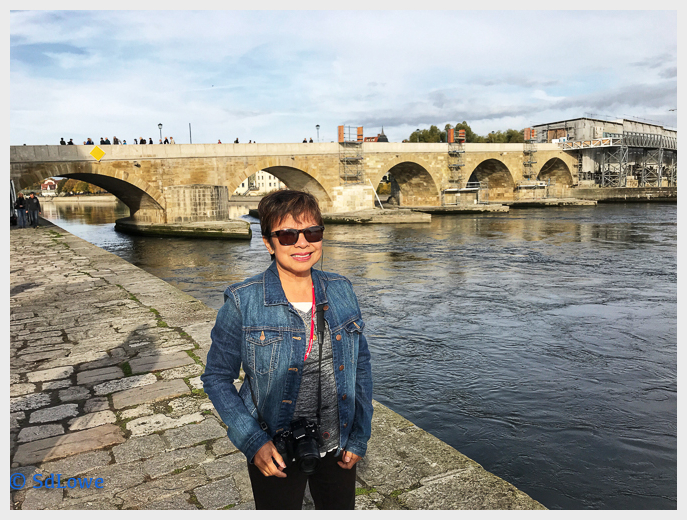
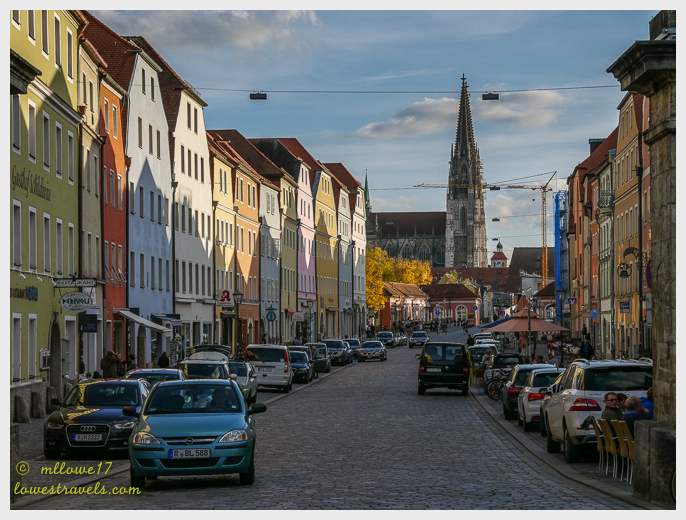

We took an optional tour here, where we learned the secrets of making weisswurst, Bavarian white sausage. The ingredients were simple: veal and pork sausage flavored with onions and fresh parsley. Once mixed, cased and simmered in hot water, we ate them paired with wheat beer and a pretzel – a classic Bavarian dish. Weisswurst is eaten without the skin, and we were taught techniques for skinning the sausage that are also traditional.
Nuremberg, Germany
This is a great stop for history buffs. Known among other things for its metal and toy craftsmanship, Nuremberg is also remembered as both the seat of Nazi propaganda and the site of punishment for Nazi war criminals. Viking offers an optional tour (we did not take it) that immerses folks in Nuremberg’s WWII history.
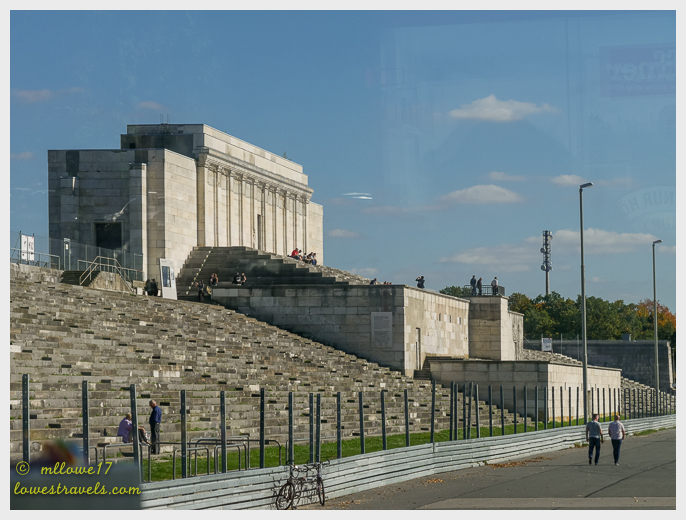
Nuremberg is the second-largest city in Bavaria, filled with traditional half-timbered houses and Gothic churches with intricate spires. Our walking tour explored the old town still surrounded by 13th-century walls with many gates and watchtowers. We toured the Imperial Palace grounds, which lay in ruins (except for the Sinwell Tower) after WWII. Fortunately it was rebuilt almost exactly as it had been before the war.
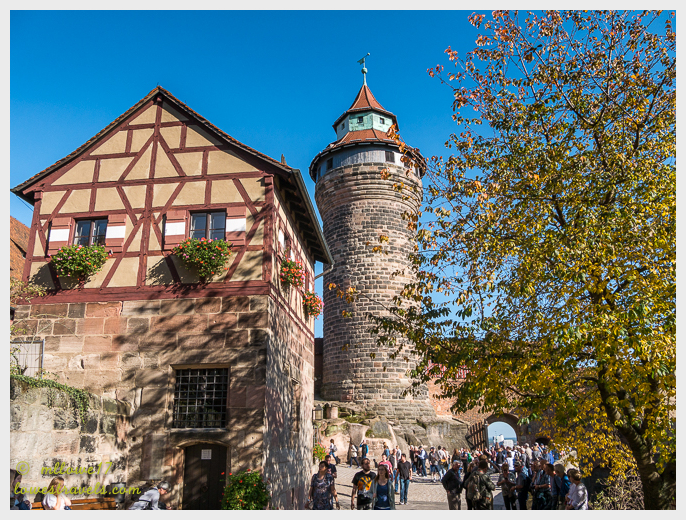
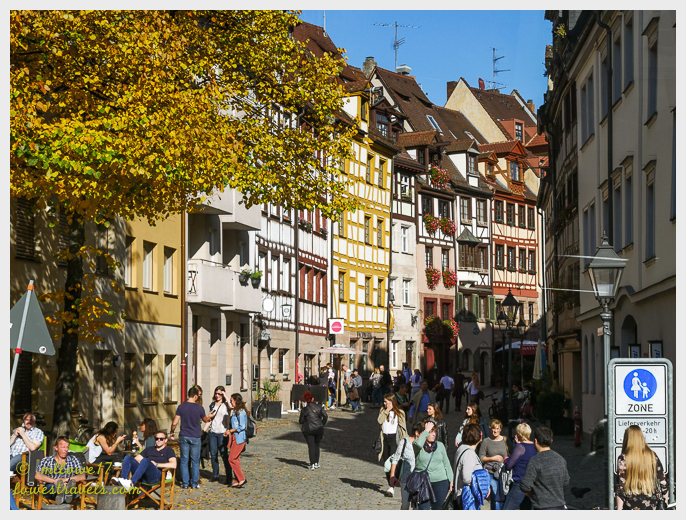
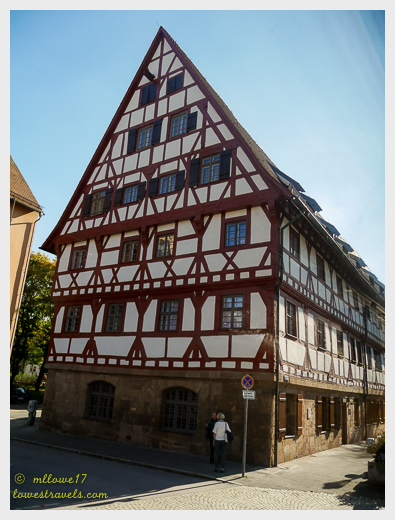
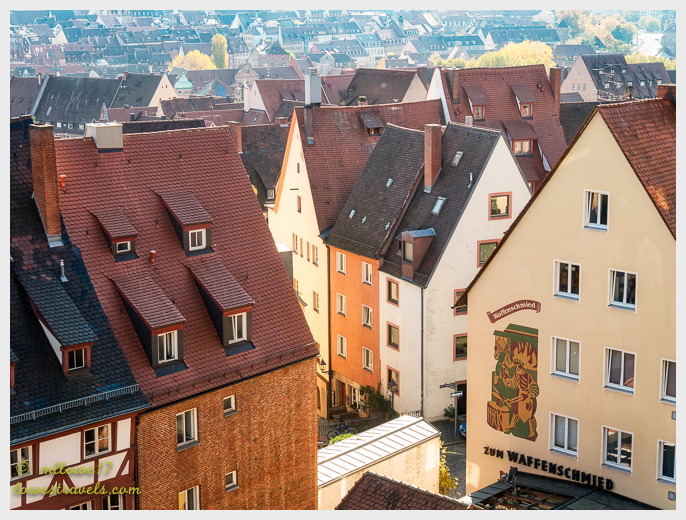
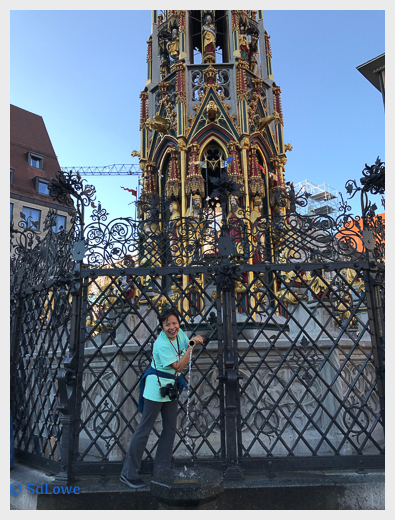
Bamberg, Germany
Bamberg is one of the loveliest German towns we visited. It was founded in 902 and remains a medieval-looking city with its city center as another UNESCO World Heritage Site. We took our walking tour around yet another old town.
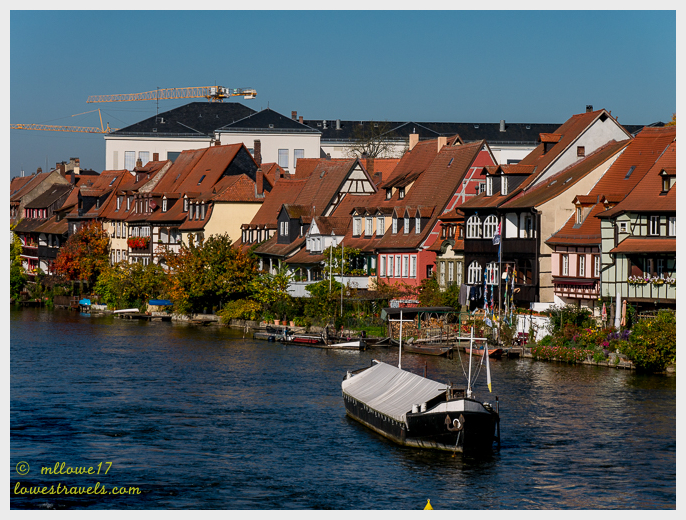
The frescoes that adorn the facades of the 14th century Old Town Hall are impressive, for they lend a three-dimensional quality achieved with trompe d’oeil architecture.

Two special details on the frescoes made us smile:
Bamberg was founded in 1007, and several centuries later a prince bishop “modernized” the city by covering medieval half-timbered framework with stone facades in the baroque style. It survived all the wars of past centuries, and we experienced it as it has been for the past several hundred years.
I was busy pointing my camera at playful decorative elements on building facades. We enjoyed walking around old town, despite the oh-so-many other tourists doing the same.
We had to taste what this city is known for, it’s distinctive “rauchbier” – simply a smoke-flavored beer. We enjoyed it at the birthplace of the original Schlenkerla Smokebeer, where many people were congregated to get a taste. Old-style smoke beers are becoming a rarity due to the “clean malt” brewing methods used today. We liked the taste – robust, bold and smooth.
Midway through our cruise, Steve found that he was eating salads and drinking beer. Just as his doctor had said would happen, his swallowing pain was receding and his sense of taste was coming back so slowly he really didn’t even notice. Yay!






















Another beautiful tour. Glad to hear Steve was able to enjoy the foods of the region.
Fantastic pictures MonaLiza! Just like postcard shots. Glad to see that Steve’s good health is beginning to sneak up on him.
Smoke flavored beer! I’ve never heard of it, but I think I would like it. Your photos of all of those German towns are so picturesque. I’m sure all the fun you were having helped with Steve’s healing. Beer and salads sound like a pretty balanced diet to me. :-))
So much history and beauty. What a lovely tour. That organ is magnificent! I am now hungry for a soft pretzel after seeing a couple in your post. So nice to see Steve with beer in hand:)
Everything about your cruise looks delightful! So much walking and learning in beautiful places…I bet you were very tired at the end of most days!
The interior of St. Stephen’s is just magnificent! I keep going back to those photos – among all of your beautiful captures – wow. Just gorgeous! I love these little towns and marvel at how well they’ve been maintained and restored over centuries. I’m sure it gets annoying to have to fight the crowds after a while, but I would still love to wander these streets someday.
Thank you for a great post. I plan on doing this cruise one year.
Fantastic! I found Mui looking at Viking’s river cruises today … and surprise, he was looking at this same itinerary you were on. Maybe we’ll follow in your footsteps sooner than I expected 😉
This is a post I hope no one reads on their phone. Actually most posts are not nearly as good on a small device. Your pictures are just amazing and deserve to be seen in the way you intended. They are like a travel brochure. What a time you had! The highest flood level in 500 years sounds pretty ominous. I love the organ it’s just so beautiful. Seeing Roman city walls is just an amazing thing. Love that picture of you with the sausage. You look like you are having such a good time. And the best part is that Steve is feeling even better and able to eat more. I bet it’s due to that wish you made and such a glorious cruise.
If we had any doubts about a river cruise, you have dashed all of them MonaLiza, with your beautiful images and great posts. We have found some of the most beautiful churches and cathedrals in some of the most quaint villages. I too think I would like smoke flavored beer, along with those wonderful-looking sausages and pretzels. So good to see you and Steve the other night. Glad Steve is able to enjoy some of the simple pleasures in life once again.